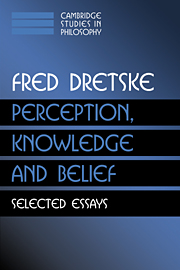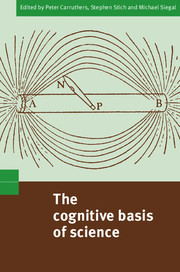What Minds Can Do
Some of a person's mental states have the power to represent real and imagined states of affairs: they have semantic properties. What Minds Can Do has two goals: to find a naturalistic or nonsemantic basis for the representational powers of a person's mind, and to show that these semantic properties are involved in the causal explanation of the person's behavior. In the process, the book addresses issues that are central to much contemporary philosophical debate. It will be of interest to a wide range of readers in philosophy of mind and of language, cognitive science, and psychology.
- Extended and accessible discussions of topics widely studied in philosophy of mind courses and seminars
- Looks at the work of many other writers in the area, such as Fodor, Davidson, Quine
- Of interest not only to philosophers but also to psychologists and cognitive scientists
Reviews & endorsements
"This is a very scholarly work." Michael Luntley, Philosophy in Review
Product details
February 2011Adobe eBook Reader
9780511822964
0 pages
0kg
This ISBN is for an eBook version which is distributed on our behalf by a third party.
Table of Contents
- Part I. The Naturalization of Intentionality:
- 1. What is intentional realism?
- 2. Introduction to informational semantics
- 3. Three problems for informational semantics
- 4. Information and teleology
- Part II. The Casual Role of Intentionality:
- 5. The computational representational theory of mind (CRTM)
- 6. Must an intentional realist be a meaning atomist?
- 7. Functionalism and the threat of pre-emption
- 8. Explaining intentional behaviour
- 9. Conclusion: a postlude on semantics and psychology
- References
- Index.






